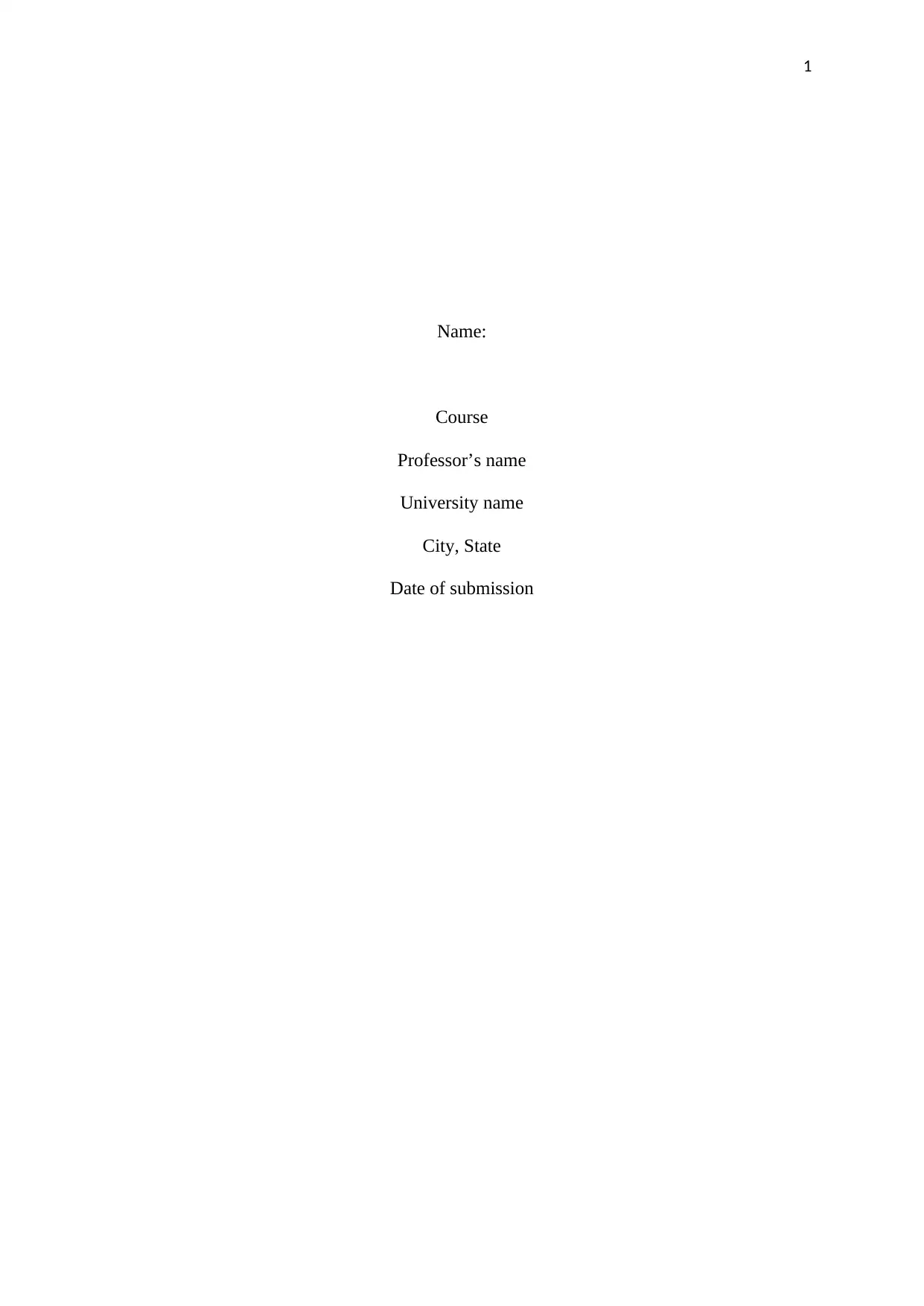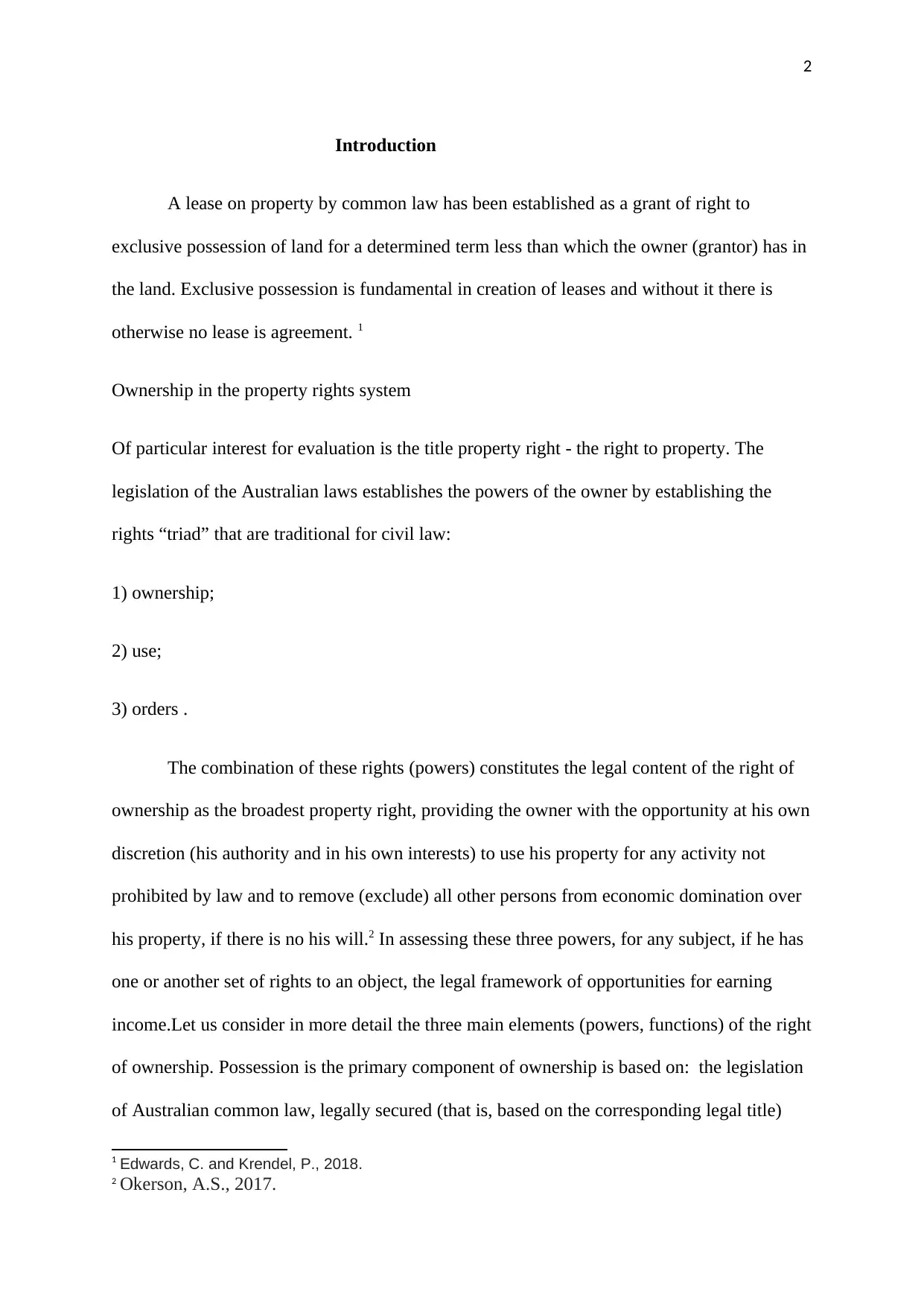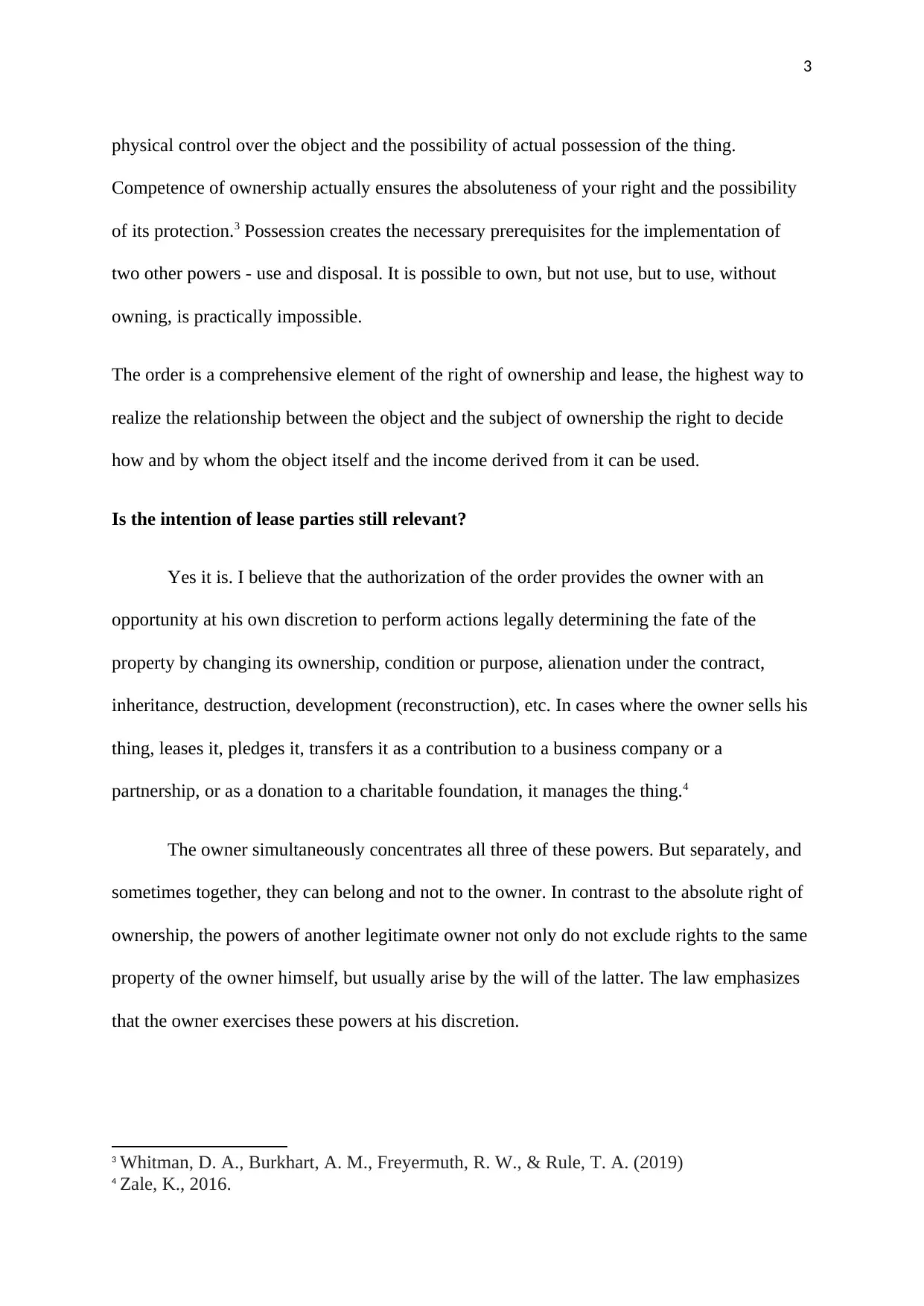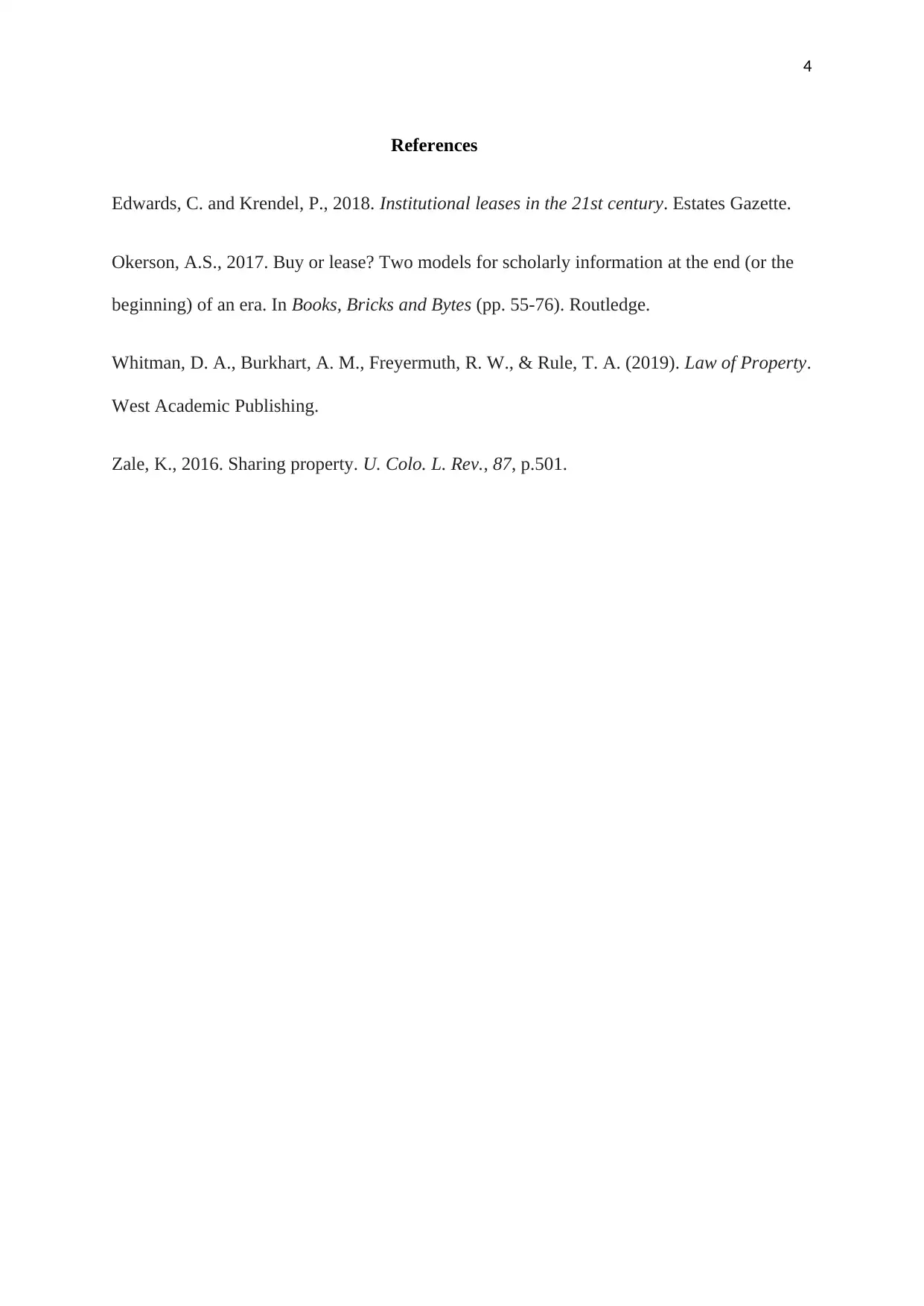SCU Online Advanced Property Law: Leasehold Estate and Property
VerifiedAdded on 2023/03/29
|4
|633
|112
Essay
AI Summary
This essay provides an analysis of property rights within the context of commercial and retail leases, drawing upon Australian common law and legislative principles. It examines the concept of exclusive possession as a fundamental element in the creation of leases and explores the 'triad' of ownership rights: ownership, use, and orders. The analysis delves into the powers associated with ownership, including possession, use, and disposal, and how these elements relate to the earning of income. The essay further considers the relevance of the intention of lease parties and the ability of the owner to legally determine the fate of the property through actions like selling, leasing, or development. It differentiates between the absolute right of ownership and the powers of legitimate owners, highlighting how the law emphasizes the owner's discretion in exercising these powers. The document references several scholarly articles to support its arguments and provide context.
1 out of 4











![[object Object]](/_next/static/media/star-bottom.7253800d.svg)